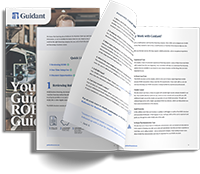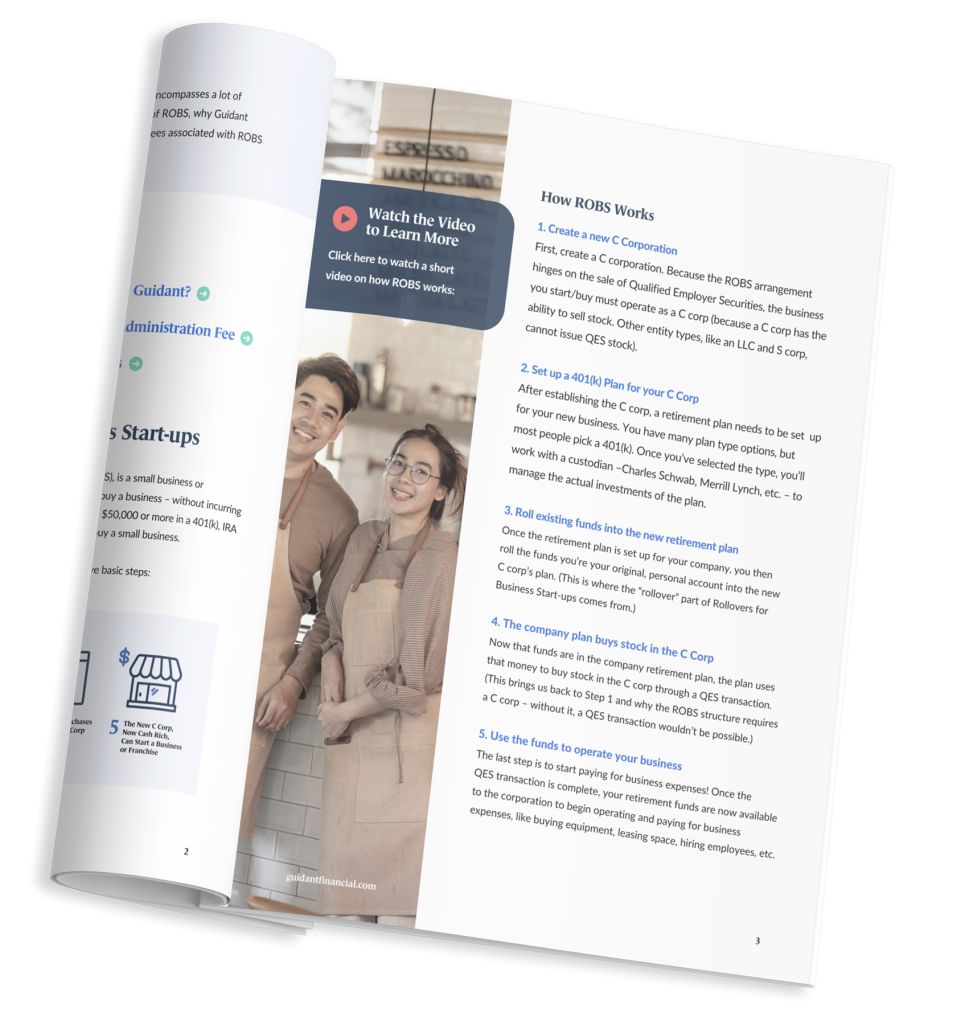Tip: Funding with Rollovers for Business Start-ups (ROBS) isn’t a 401(k) loan. ROBS isn’t a loan – so that means ROBS small business funding doesn’t require monthly repayments or put you in debt.
Let’s take a closer look at what a 401(k) plan participant loan is and why it is an employee benefit.
What is a 401(k) Plan Participant Loan?
Essentially, 401(k) plan loans are a type of loan that allows 401(k) plan participants to borrow money from their individual 401(k) plan accounts. The loan is repaid over a few years (typically up to five) with interest. The interest paid is why the IRS allows for money to be borrowed from the retirement account — because the borrower is putting more money back into the account than what was taken out, which helps the account grow.
Why is a 401(k) Loan an Employee Benefit?
Typically, 401(k) plan participants can’t access the funds in their retirement account before the age of 59 ½ without paying an early withdrawal fee. There are some exceptions to this rule, but generally, if anyone removes funds from their account before reaching normal retirement age, the IRS will make them pay costly fees. A 401(k) plan loan is one of the few exceptions that allows employees (and owners) to access their funds.
Simply offering a 401(k) plan is a competitive benefit that helps you attract and hire top talent. As a ROBS client, you have the option of including 401(k) loans as a part of your company’s 401(k) plan. The perk of accessing money before retirement age is an additional benefit that comes built into your business’s 401(k) plan – which makes it an easy tool for hiring.
During the ROBS setup process, your Guidant 401(k) plan team will walk you through every step of 401(k) plan participant loans – making sure you have all the details and know just how to administer them.
Who Can Take a 401(k) Plan Loan?
If your plan allows for loans, any eligible employee — someone who has met the requirements required for participation, such as hours worked — can take a loan.
Fund Your Small Business Now
You aren’t required to set up your 401(k) plan to offer participant loans. It’s important to remember that if you’d personally like the ability to take a loan, you’ll need to allow all participants to take a 401(k) loan.
How Can I Set Up My Guidant Plan to Allow for Participant Loans?
All 401(k) plan rules, such as eligibility, vesting, and more, are selected by you during the initial setup of your company’s 401(k) plan. Whether or not you allow for loans is one of the options available to you.
If you’d like the ability to personally borrow from your 401(k) account, you need to allow for loans for everyone who is eligible. In other words, business owners aren’t allowed to have different 401(k) plan rules than their employees.
If you’re a current ROBS client and your plan doesn’t allow for loans, you can make an amendment (or change) to your plan to allow for loans in the upcoming plan year. If this is something you are considering, it’s always a good idea to check in with your Guidant account team so they can walk you through the timing and details.
401(k) Plan Participant Loan Basics
Guidant’s onboarding team will walk you through all the participant loan specifics, but it’s helpful to know 401(k) loan rules and how they’re administered.
Here are some of the basics:
- Loans must be available to all eligible employees — not just owners. Remember, this is a great benefit to offer your candidates and employees!
- Your plan must allow for loans before someone takes a loan. That means you can’t let someone take money out of their retirement account if a) your plan wasn’t designed for loans b) they haven’t met the eligibility requirements.
- Loans have limits. The IRS rules that the most someone can borrow is $50,000 or 50 percent of their vested account balance, whichever is less.
- All of these rules apply to both employees and owners.
- 401(k) loans must be repaid in five years unless the loan is for the purchase of a primary residence.
- You aren’t required to offer 401(k) plan participant loans – but it is an attractive benefit to employees and easy to do with Guidant.
Ready to Get Started?
If you’re interested in funding your business with Rollovers for Business Start-ups (ROBS) and want to know more about how ROBS can help you offer great benefits to attract top talent, give us a call today at 888-472-4455 or contact us online.


















